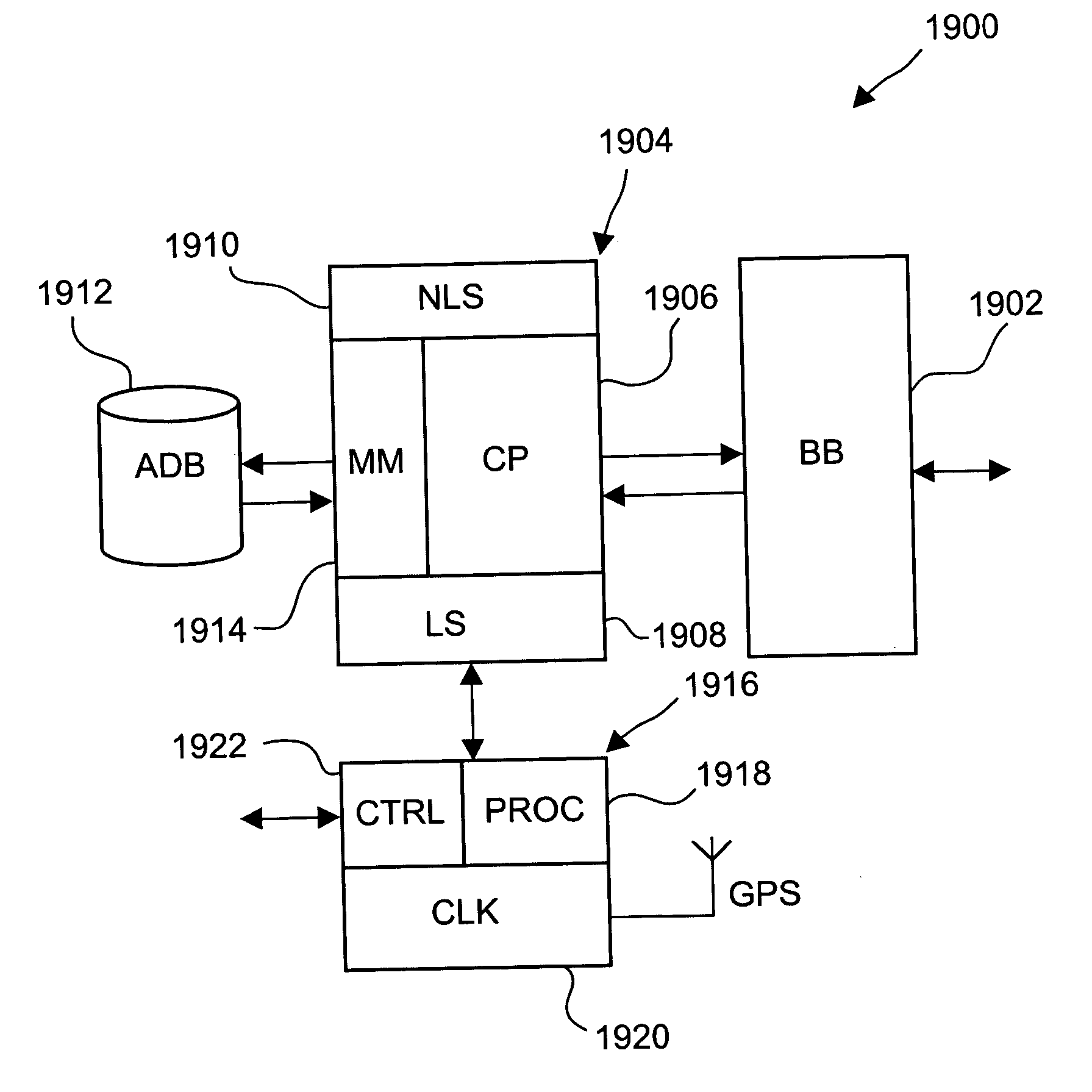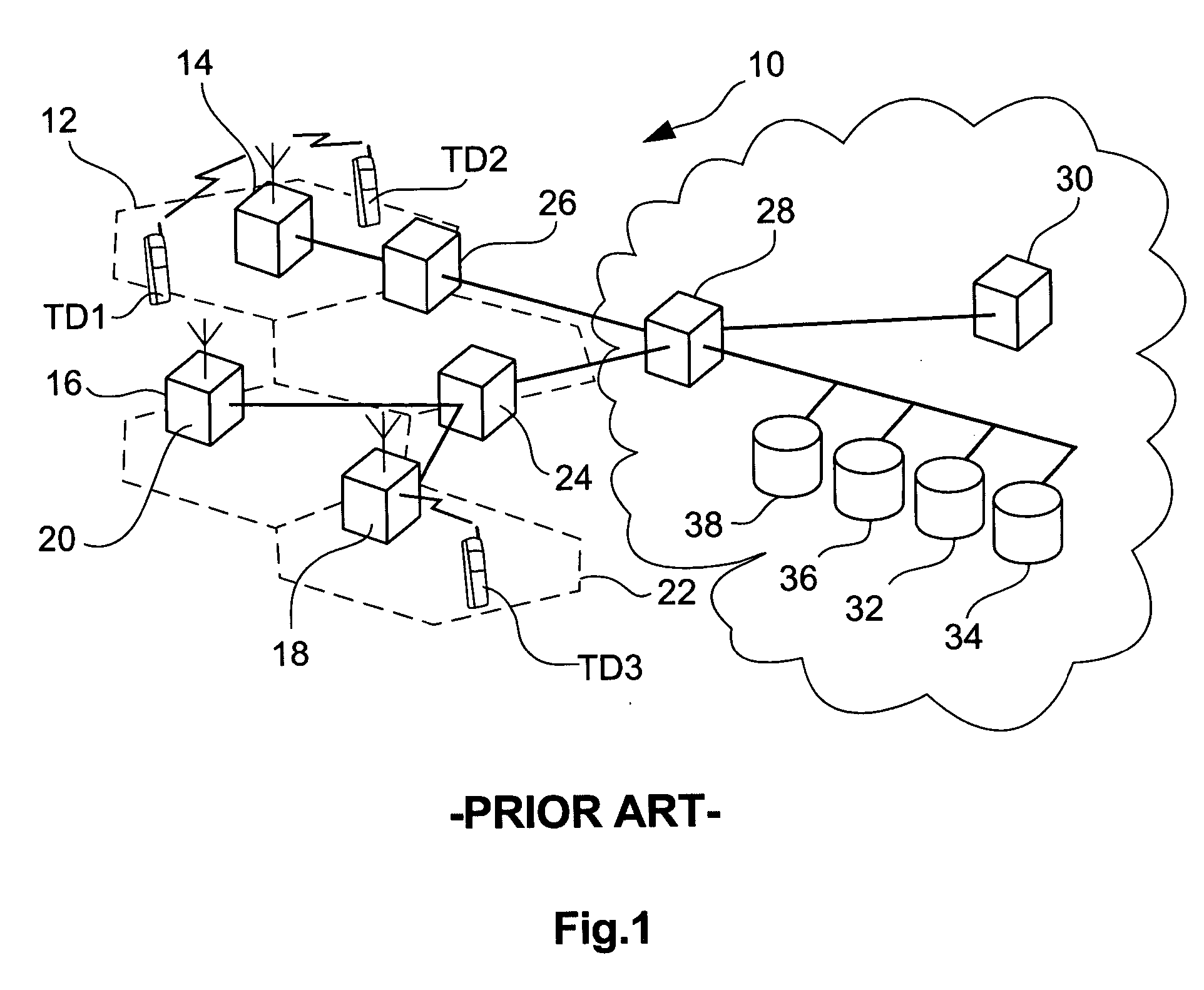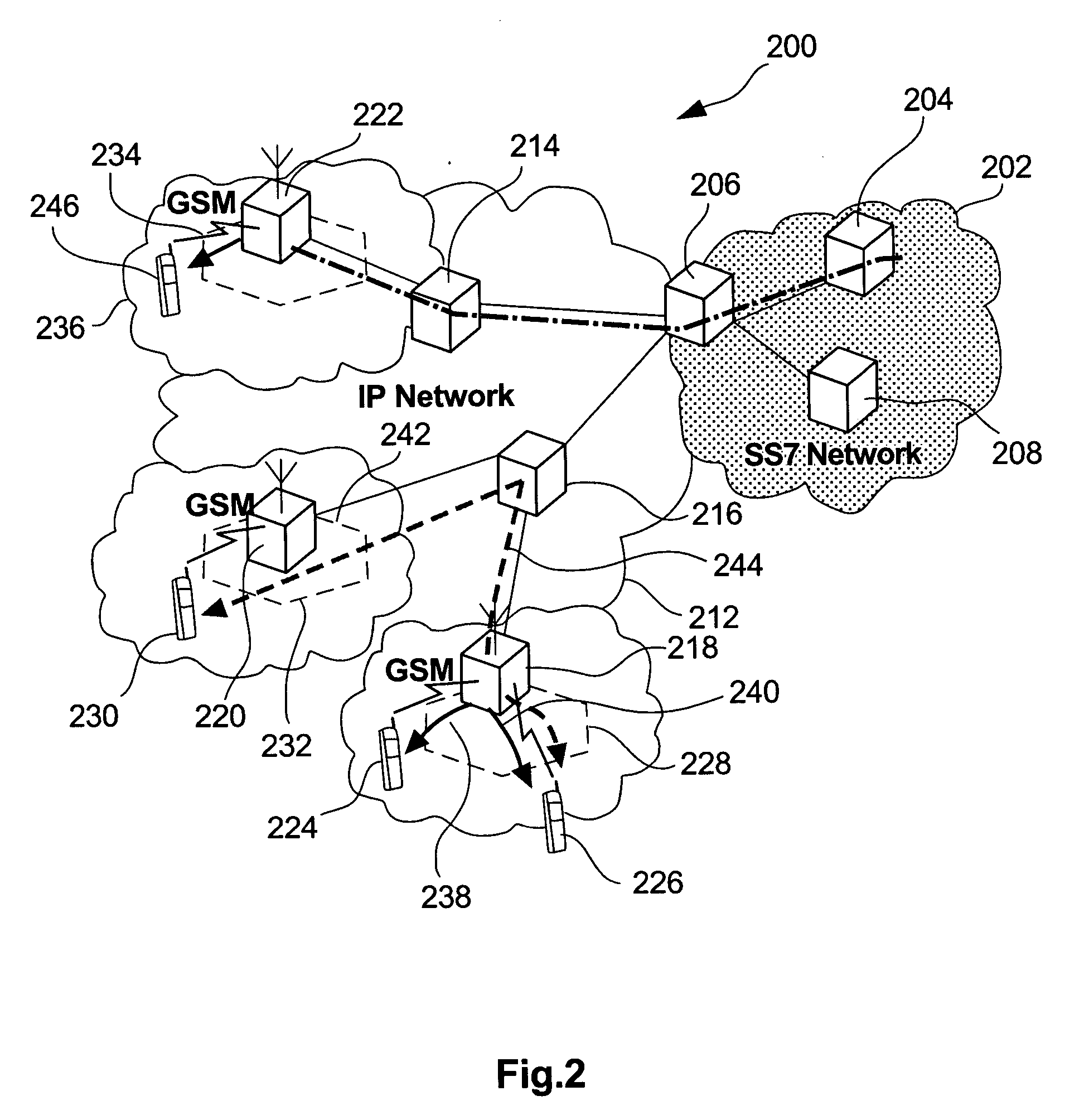Low-cost radio access network enabling local switching
a radio access network and low-cost technology, applied in the field of low-cost radio access networks enabling local switching, can solve the problems of high power requirements, inability to provide rural mobile coverage economically feasible, and inability to provide rural mobile coverage, etc., and achieve the effect of low cos
- Summary
- Abstract
- Description
- Claims
- Application Information
AI Technical Summary
Benefits of technology
Problems solved by technology
Method used
Image
Examples
first embodiment
[0191] A first embodiment, which will be described with reference to FIGS. 2 and 3 relates to a signaling scenario that is based on SS7. Service enrolment, authentication and location update procedures, which can be implemented in the network structure of this embodiment, will be described with reference to FIGS. 4 to 9.
second embodiment
[0192] A second embodiment, which will be described with reference to FIGS. 10 to 14 relates to a scenario based on signaling according to the Session Initialization Protocol (SIP).
[0193] 1. SS7-based Access Network
[0194] 1.1 Network Structure
[0195]FIG. 2 shows a schematic diagram representing a structure of a GSM PLMN according to a first embodiment of the invention. The PLMN 200 of FIG. 2 comprises a core network 202, which hereinafter will also be referred to as SS7-network. In an embodiment of the present invention there are a MSC 204, a signaling gateway (SG) 206, connected to the MSC 204, a HLR 208, and a VLR 210. The core network 202 is connected with access centers 214 and 216 through signaling gateway 206 and an IP network 212. Each access center 214, 216 has assigned access points 218 and 220, 222 respectively.
[0196] The access point of the preferred embodiment allows to use GSM terminal devices such as for instance mobile telephones, handheld computers, laptop computer...
case examples
[0367]5. Use Case Examples
[0368] The above description of different embodiments of network structures and signaling examples shows that the invention provides for low-cost wireless communication facilities using ubiquitous GSM terminal devices even in the absence of standard GSM network coverage.
[0369] An access point of the invention provides an insular network cell for communication between terminal devices located in that network cell. The access point is autonomous in that no further network node is needed in establishing maintaining and releasing a call between two terminal devices located in the network cell. In contrast, prior-art GSM networks are not able to switch phone calls without the signaling capabilities of a core network. Therefore, the access point of the invention is particularly useful to provide wireless communication in areas, where installation, operation and maintenance of a GSM network did not seem economically feasible so far on the basis of the prior-art t...
PUM
 Login to View More
Login to View More Abstract
Description
Claims
Application Information
 Login to View More
Login to View More - R&D
- Intellectual Property
- Life Sciences
- Materials
- Tech Scout
- Unparalleled Data Quality
- Higher Quality Content
- 60% Fewer Hallucinations
Browse by: Latest US Patents, China's latest patents, Technical Efficacy Thesaurus, Application Domain, Technology Topic, Popular Technical Reports.
© 2025 PatSnap. All rights reserved.Legal|Privacy policy|Modern Slavery Act Transparency Statement|Sitemap|About US| Contact US: help@patsnap.com



